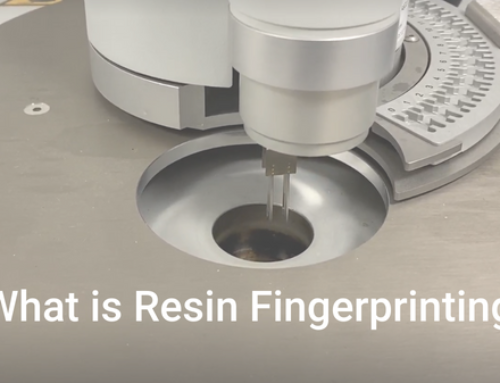What was the Titan submersible made from?
The Titan submersible was constructed using titanium alloy for the hemispherical domes at each end of the vessel, and carbon fibre reinforced plastic (CFRP) for the hull. CFRP is a ‘composite’ material, meaning its mechanical properties are a result of the combination of two constituent materials. Carbon fibres exhibit terrific tensile strength but are useless on their own; they are therefore infused with a polymer to hold them together and to produce strong, lightweight structure.
The polymer holds the fibres in alignment, allowing the material to resist tensile, compressive, and flexural loads by distributing forces to all the fibres in the structure. Multiple layers can be built up to create a ‘laminate’ and cured under pressure and at elevated temperature. Unlike metallic structures, composites are anisotropic, meaning their properties are not equal in all directions: their strength and stiffness is far superior in the direction of the fibres. This means individual layers must be orientated to ensure sufficient mechanical properties in different directions but has the advantage of allowing engineers to tailor the material to match expected loads.
Implication of this material in a submersible application?
Tailoring mechanical properties, combined with inherent low weight, allows for very efficient and optimised designs. This has two distinct advantages for submersible applications: it allows for a greater payload (number of passengers), and a greater natural buoyancy, reducing the need for additional materials or systems.
The use of composite materials in many applications is well documented, understood, and regulated. However, deep-water submersibles present a novel application, and they are subjected to greater compressive forces than in any other environment. Whilst composites can be designed to resist such forces, they are much more sensitive to defects than in any other loading case.
Metallic structures will undergo gradual deformation if pushed beyond their operational limit, known as plastic yielding. This provides a warning that the structure has been compromised and repairs are necessary. Composites, however, do not exhibit any plastic yielding, often appearing to fail catastrophically without warning. In reality, microscopic failures can occur each time the structure is put under load or are created during the complex fabrication process: fibre misalignment, insufficient consolidation between layers, thermal history, contamination, resin flow, or uneven heating during curing, may all result in inherent defects. Additionally, composite structures are sensitive to accidental minor impacts.
Where these defects exist, the surrounding material is subjected to greater loads, exacerbating the rate at which defects occur, particularly the creation of voids and delaminations between individual layers in the laminate. The constant cyclic loading each time the submersible dives allow these defects to grow and eventually coalesce. Because the fibres in a composite are orientated in the plane of the laminate, any transverse loads perpendicular to the surface are only supported by the polymer. Therefore, where sufficiently large delaminations exist, compressive loading causes buckling of the laminate, and subsequently, rapid loss of structural integrity and failure.
The gradual yielding of metallic structures can also be easily detected using strain-gauges as part of an in-service structural monitoring system, and action taken to avoid failure. The high stiffness and lower strain-to-failure of composite materials reduces the window in which strain-gauges can provide adequate warning. Additionally, acoustic-emission sensors only detect the larger energy release associated with the coalescence of defects, which only occurs microseconds before catastrophic failure.
Why the Titan submersible could have imploded?
The benefits of using advanced materials such as composites are numerous, and their safe application has been proven in many fields. However, they are subjected to extensive testing, certification, and regulation regarding manufacture and in-service use. In critical applications such as aerospace where high cyclic loading is expected, there are also strict lifecycle limits to account for inevitable defect creation, before an aircraft is retired.
All these processes minimise defects in composites and ensure the structure meets the design specification to operate safely. It is unknown how these compare to the processes adopted by the manufacturer and operators of the submersible which might have resulted in a higher defect rate and therefore increased risk of structural failure as described above, with subsequent buckling of the hull and rapid implosion.
Introducing a composite hull to submersible designs also must consider any mismatch in material properties at the interface with the titanium alloy bulkheads and how this might be amplified by high compressive and thermal cycling. The adequacy of the materials specified for viewing ports is also important and must match or exceed the performance of all other materials used in the construction to avoid any weak points. This only goes to exemplify the importance and need for following agreed upon design principles and engineering practices, regulated manufacturing processes, traceability and non-destructive testing, and on-going monitoring and inspection of structures where lives are at risk if failure occurred.
Testing for Safety
At Impact Solutions, we are equipped to undertake mechanical testing of composites and can assess the effects of damage caused by impact loading. We can also perform DSC analysis to determine the degree of cure and other thermal properties as well as tensile, compressive strength and pressure testing.





